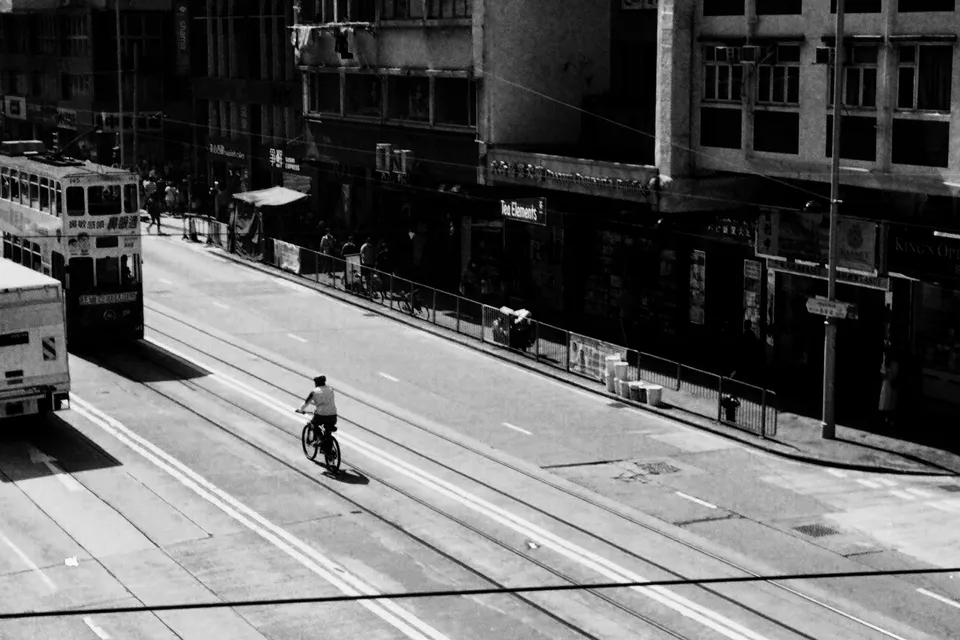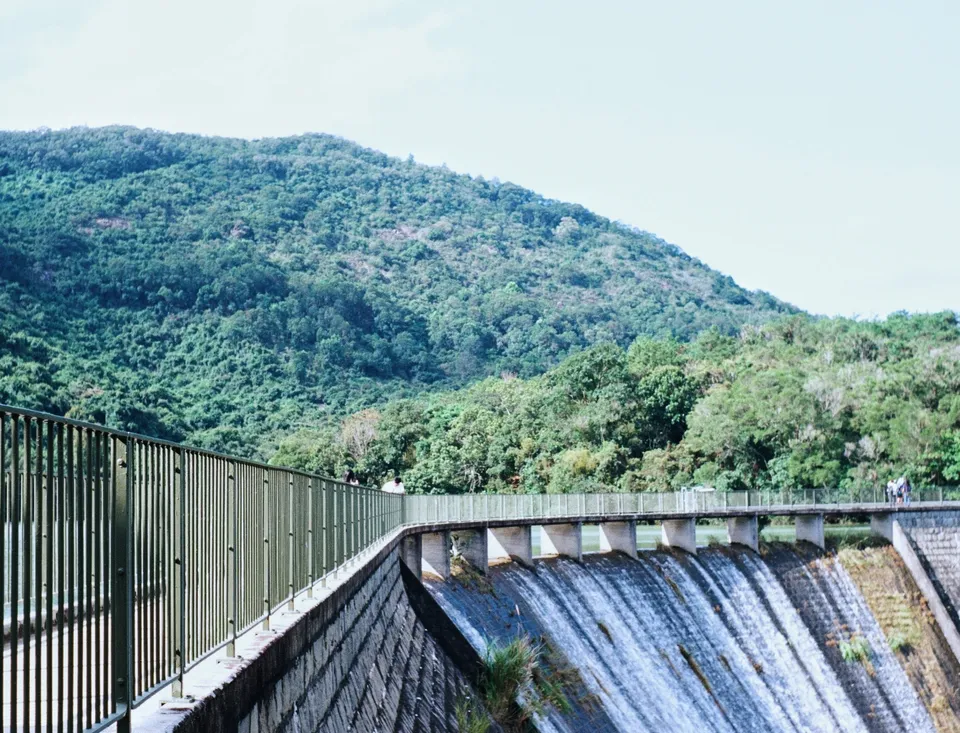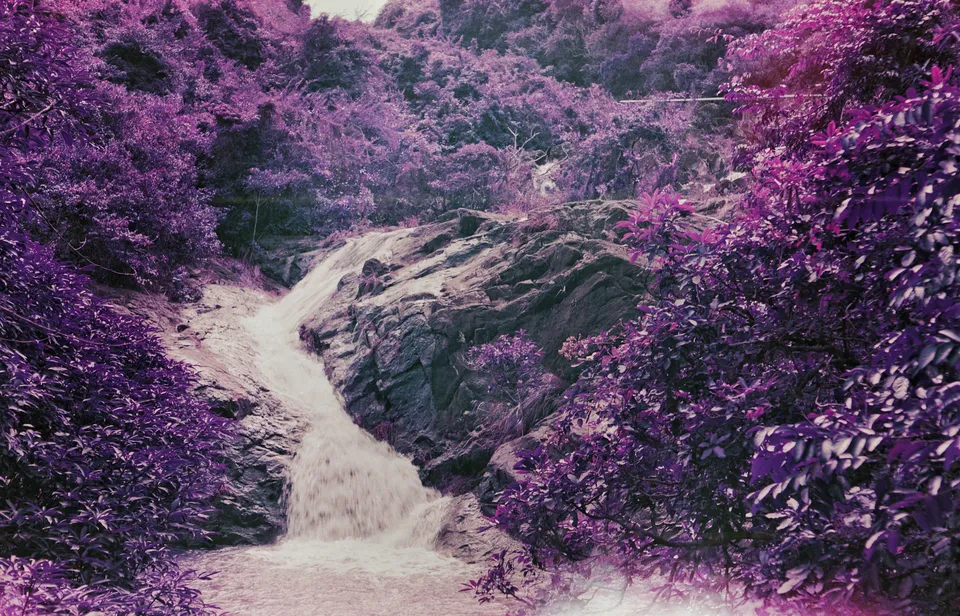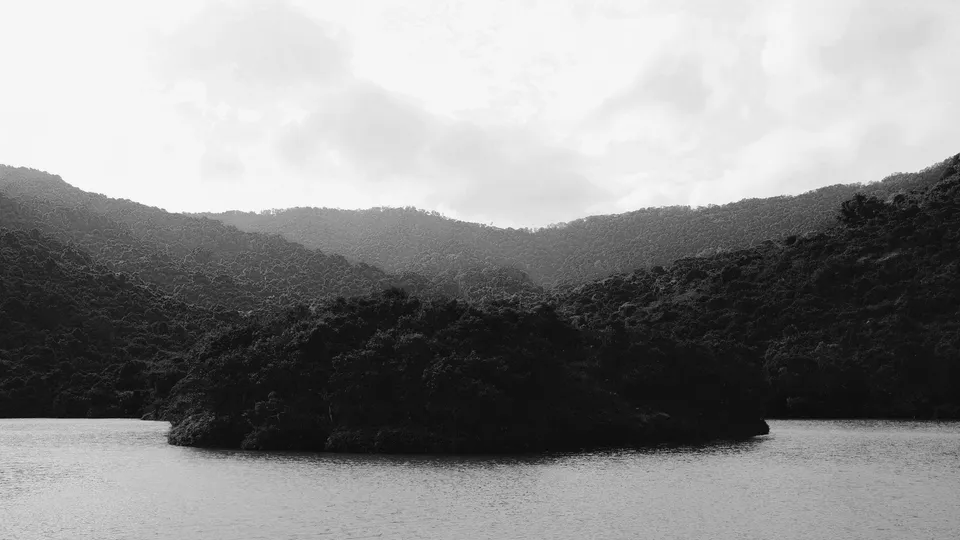IG Monthly Best - October 2021
Color, Reservoir, No more LOMO, and Filter
2021-10 Best #1: 偶有時機
When the season is right and the sun casts straight along King's road
Originally, this photo was taken on Kodak ColorPlus 200 (so it's a colored photo), then later converted into black and white in post-processing. As a beginner (both eBay and film photography) I bought 3 Agfa Solina and 1 Ansco Memar, all more or less the same model of camera. Like having 4 different sets of bluetooth earphones and 4 different laptops, I had to use them from time to time or they'll soon break due to depression.
That day, I brought the Solina with Vario shutter and Color Agnar lens (the 2nd most usable of the lot regardless the broken frame counter) to Fortress Hill, and took some Sunny 16 snaps. For the most part I kept the shutter speed at 200, and used either f/8 or f/11, focusing from 5m to infinity. With a pre-focused setting, it is actually faster to snap than waiting for a digital camera to auto-focus.
It was early afternoon, so the sun was shining from the west, casting shadows along the King's road. This is quite a wide road, 4 lanes as I remember, making it easy to capture clean images of people and vehicles on the road.
Now, why did I converted this image from color to black and white? After developing it in a lab, the shot appears overexposed, perhaps due to slow shutter or apertured opened too widely, I don't know. As I learned from a fellow photographer—"If the color is bad, make it black and white." and I so did.
Turning the photo black and white removes one dimension (color) from the image, leaving only one dimension (light intensity) for the viewer to interpret. By increasing the contrast of the image I mindfully encourage the viewer to notice the contrast between the bike-rider, the buildings and the tram.
Sometimes, the color distracts us from properly judging or seeing a matter. Only by removing the extra dimension do we begin to see its true nature. If you feel lost and unable to figure out an answer, maybe it helps to sit down, and strip it off layer by layer to discover what's hidden underneath.
2021-10 Best #2: 又係時候出
Slightly sunny, chances of muddy shoes
Old cameras from the 1950s, like my Agfa Solina or this new Zeiss Ikon Contina II (524/24), have a red dot on both the aperture ring and the focus ring. These are convenient defaults in a daylight setting to quickly "snap" a picture without having to worry about precise focusing.
Me, being too naive, and too lazy, falsely believed that this is the "sweet spot" the lens where image is the sharpest regardless of the distance. While in fact, they give "acceptable focus". You can clearly see the degredation in sharpness as the distance increase in this image.
This photo was taken on slightly expired Kodak Ektar 100 (+2 months), with a Zeiss Ikon Contina II (524/24) at Happy Snapper (red dot) setting, at either 1/100s or 1/250s speed. The blurry picture isn't due to camera shake like in the case of Moskva-5 but because Happy Snapper setting isn't really for landscape. In this shot close to mid range appear reasonably sharp and loss of sharpness becomes apparent at longer distance.
In late October, autumn arrived all of a sudden when temperature dropped from 30+°C to 20 something °C, and my friend called me out for a short photohike. Early on a Sunday morning, we took the bus and then switched to minibus to Ho Pui Reservoir. The hike to the reservoir is easy, simply walking along the paved, slightly slanted road up the hill. The distinctive MTR maintenance centre and the long bridge arching over it can be readily recognized.
The dam is right at the entrence of the trail, if one's target is to simply take photo of the dam, then it will take no time before they walk back down the hill and go get a morning coffee. One can walk along the walkway on top of the dam, and appreciate the view of the small green island in the middle of the reservoir, or look from above water falling along the dam body downstream. Having made it to the other side of the dam, there's a long stairs walking to the bottom of the dam. This photo was taken somewhere on the stairs.
After finishing the trail encircling the reservoir, we walked back and took the minibus all the way to Yuen Long, and had a small coffee tasting session in Accro Coffee, a famous(?) cafe amongst the enthusiasts. We recognized the similarity between coffee and photography, where equipment (coffee maker ~ camera) and the consumable nature (coffee bean ~ film), and more importantly, both are expensive hobbies.
2021-10 Best #3: 咩顏色睇慣咗都變ok
Slightly shifted color
No idea what I was looking for or why I had the false hope that LOMO film would come out with something worth the price. Originally I was looking to get an color infrared film, if I could, for their dreamlike pinkish render of the foliage and cold cool blue on landscape. No, these are expensive film stocks that I could get locally. Then I saw LOMO Purple on the shelf, the 120-variant, the lab had sold out the 135 kind and I feel they are not so keen in restock on the film.
On the day I went to Ho Pui Reservoir, I brought along my Fujifilm XT-20 (it's digital!), Contina II and the Moskva-5 I have a love-hate relationship with, as it's my only medium format film camera. The folding medium format has a 3/8" tripod hole which I bought an adaptor for it to work with 1/4" tripod screw, with tissue paper as padding to increase friction or it unscrew itself due to weight of the camera.
Last month I mentioned I wanted to do a controlled test on the Moskva-5 to check if shutter speed at 1/250s actually introduce camera shake. The entire roll of LOMO purple was taken on tripod, same shot at 1/100s and 1/250s to check for any shake. No shake can be identified from the scan, a happy conclusion that the camera's Moment-24C shutter is good, and my hands are shaky. (To be fair, I find it hard to hold and support the lens assembly when handheld—invite any tips that you may have)
A horizontal line may be seen slightly above the middle of the frame. This line appears also on the negative so it's probably not a fault in the scanner. 6 out of 8 shots of this roll appear like this, which I was able to repair in post-processing if the line happen to be on the sky where the color is consistent, more difficult however for a shot like this.
LOMO purple is obviously not someone we are used to looking at, but the more I looked at it the more I can accept its otherworldly (sadly not dreamlike enough) coloring and the waterfall serves as an interesting separator and diversion from all the foilage, without which the photo would have been bland and boring like the others in the roll.
When we first arrived on the bridge before this waterfall, the surrounding was clear of people. However as I began deploying my tripod and screwing the adaptor onto Moskva-5, a crowd began to form, and a group of 4 had to take photos of themselves in all combinations and permutations of groups of 2, of 3 and luckily not asking for my assistance. No concept of queuing in these people, as the next group of 2 cutting into the position, as I stood nearby, waiting. Assertiveness had to been demonstrated, in order to get my rightful position to photography this shot. At last it was done, and I was happy.
2021-10 Personal Best: 用藍色filter可以得出depth map咁嘅野 疊落幅黑白就可以加強番個對比但都係唔夠強烈(尤其前景)
BnW then overlapped with a kind of depth map from blue filtered BnW to get stronger separation but still unhappy with the result
A lot of the good photos of this month emerged from my half-day outing to Ho Pui Reservoir. This photo being one of my favorite because it captures the cascading hills which I never expected to get from this place. Originally, the shot was taken on my Fujifilm XT-20 with the Fujinon XF 23mm lens—ok wide for an ok landscape.
Of course, it didn't come out like this without extensive post-processing. In color version of this photo, the fading of distant hills is not as obvious as this one because human (my) eyes seem unable to separate the fading green color between near and distant hills.
To increase the contrast, first I converted this photo into black and white with a blue filter, which reduces the details on the green part of the image to mere gray, dark, or darker chunks. This alone isn't enough because the sky is blown out, and all details of the foilage are lost. So I separately converted the original image to black and white with a green filter, in turns boosting the contrast and details of the leaves. Last I superimposed the blue-filtered image on top, darkening the hills with an appropriate level of contrasts, while keeping the shadow details.
Not sure if I did it right, I anyways like how it comes out.
Recently after having read Ansel Adams's "Examples: the making of 40 photographs", I began to get a better notion of how a black and white photo should be produced. Color photography uses filter sparsely, sometimes CPL or ND filter for specific effects and just that. One will do fine without any filter for color photos. On a black and white film, however, a filter is essential to generate anything but pale and bland image. I am pleased with how this experiement turned out. Equipped with knowledge of filter usage, I am more confident in shooting black and white film more properly using filters.



